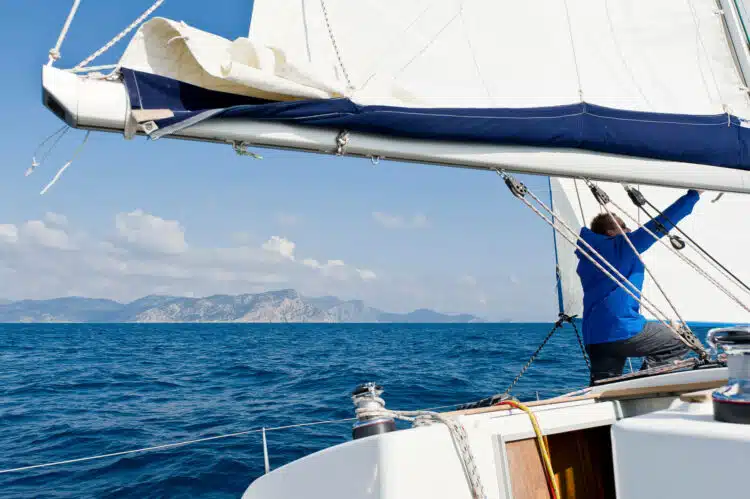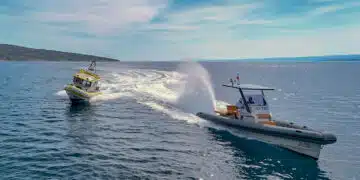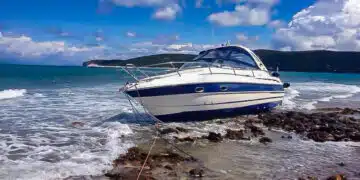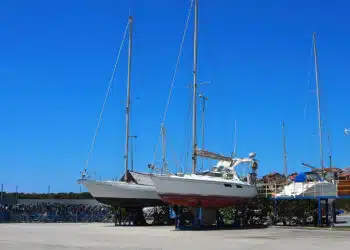The rigging, i.e. the rigging with all parts of the standing and running rigging including mast and spars, is one of the most important components of a sailing yacht. SeaHelp lists the different types and gives tips on maintenance and care.
When choosing the correct rig, two systems can be roughly distinguished first: Top rig or partial rig. Both types have advantages and disadvantages. The difference between the two forms is mainly that in the top rig, the forestay and backstay attach to the masthead at the same height. To trim the forestay, only the backstay needs to be adjusted: the closer the backstay is fetched, the higher the resulting forestay tension.
With partial rigging, on the other hand, the forestay is set a little lower; only the backstay runs over the masthead here. The forestay sits lower in the partial rig. Many owners prefer a so-called 9/10 rig. This means that the forestay sits one-tenth lower than the masthead, relative to the mast, which is above deck.
Disadvantage: it is less stable and can also twist in the transverse direction. Advantage: the headsail area is smaller, and without having to change the headsail right away, you can adjust the total sail area just by reefing the mainsail.
If a new rig is to be purchased, it is essential to consult a professional
Important: is already a yacht for which only a new rig is to be purchased, a specialist should definitely be consulted. After the mast material (aluminum, carbon or wood) has been selected, the professional can also explain the advantages and disadvantages of a mast standing on deck or on the keel and give tips on whether and, if so, how many pairs of spreader should be installed.
In addition, it is easy to clarify which mast profile fits best, and whether the shrouds and stage should be made of metal wire or rod or cordage.
Intervals for checks and material replacement depend on the respective use and stress
The intervals for checks and, if necessary, for a due material exchange are strongly dependent on the respective use and the load. Regatta sailors, for example, need to check and, if necessary, replace their material more frequently than recreational sailors, since the rig is naturally subjected to greater stress here.
For recreational sailors, a loose rule of thumb is that the so-called standing rigging should be replaced about every 15,000 nautical miles. Standing rigging is the term used to describe those parts of the rigging of sailing ships or boats that serve as bracing to stiffen the masts, i.e. primarily the stays and shrouds. The name standing rigging is explained by the fact that this is usually not moved during maneuvers.

And: when buying a used yacht, always be careful: here, the mast should always be thoroughly inspected for hairline cracks and other signs of wear.
After wintering out, care should be taken to ensure correct mast installation and adjustment. For larger yachts with more elaborate installations, the rig should be checked and adjusted by a professional when the mast is first set after winter storage.
A new rig should fit the boat type, intended use and cruising area
For smaller yachts and boats with manageable rigs, the owner can make do with appropriate markings to then easily trim the mast himself at the beginning of the next season. But even here, prudent action is required, because incorrect trimming can lead to strain – and in the worst case, damage to the mast (and the standing rigging).
The same applies to the adjustment of the mast drop, i.e. the inclination of the mast to the stern, which is mainly determined by the length of the forestay. It is measured from a free-hanging main halyard in relation to the luff fitting of the main boom in degrees. Again, for smaller yachts and sailboats, appropriate markings (depending on the sailing area) can help, in addition to appropriate measuring devices.
Even those who want to purchase a completely new rig for their yacht should pay attention to a few things. Here it applies above all that it should fit to boat type, intended use and cruising area. Because: even a wrongly planned rig can have negative consequences for the entire yacht.
SeaHelp names on request contact persons in the field of rigging & technology in the area of their respective areas of operation: info@sea-help.eu. Inexpensive insurance for yachts with or without renewed rigging is available through SeaHelp-Insurance.













